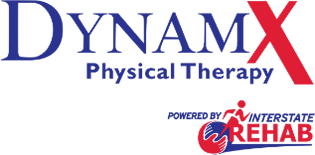Most of us know that exercising regularly is good for our health, and that too much sitting or inactivity is bad. But sometimes we tell ourselves little white lies about why we can’t exercise. Here are some of the most common untruths, as listed by the American Physical Therapy Association.
I’ve been inactive for too long; I can’t start exercising now.
It is never too late to start exercising, and any activity or exercise is better than none. The experts at AIM Rehab Services, a Physiquality network member in Florida, suggest incorporating little ways to force yourself to move a little to help you get started. For example, use a smaller glass or cup for your water or coffee, which will force you to get up and walk to the kitchen to refill more frequently. Or park a little further from the front door of the store when you run errands, so you have a little more to walk before you get in.

It hurts to move, so I shouldn’t move very often.
Depending on what’s causing your pain, it may actually help you to move more. For example, if you have joint pain from arthritis, it has been shown that increasing your activity can reduce pain. But it’s understandable that you would be cautious; talk to your physical therapist about safe ways to exercise or be more active. Remember that physical therapists are musculoskeletal experts — PTs can evaluate your current state of physical health to determine what types of activity are best for your body and to improve your health.
I have a chronic disease, so I shouldn’t exercise.
Depending on what chronic disease you have, exercise might actually be beneficial. Exercise can make your heart and lungs healthier, reduce your risk of type 2 diabetes and stroke, and improve your mental health. But if you have a diagnosis of a chronic condition, talk to your physical therapist and your primary care provider about what types of exercise or activity would be best for you.
I don’t like to exercise, and I have no motivation to do so.
All of us have days when we don’t want to exercise, but if you’re wanting to improve your health, you can find ways to exercise that appeal to you. Take a beginner dance class (and if you’re taking it online, you can turn the camera off, if you’re self-conscious). Try out a standing or treadmill desk. Physiquality member DynamX Physical Therapy reminds us that gardening can be quite a workout between digging, weeding, planting and watering. Or start a walking program with a buddy — you can remain socially distant while catching up with a friend and getting out of your house!

I don’t have enough time to exercise.
It’s understandable to be put off by the idea of scheduling exercise when many of us are wearing multiple hats all day every day, often trapped inside while changing between roles. Employee. Parent. Employer. Child. Volunteer. Pet nurturer. It’s easy to get caught up in the to do list without wanting to add something else. But remember than any activity is better than nothing, and studies have shown that walking just 30 minutes a day is beneficial — and it doesn’t even have to be done all at once. Think about multitasking when you have a list of calls to make; you can make your calls and take a walk around the block (or around the house) at the same time.
I don’t have the energy to exercise, and when I try, I get out of breath quickly.
This may be part of our number one lie above — if you haven’t worked out in a while, your energy levels will be lower, and you might get winded more quickly. It’s still a success to start small — set a goal for a 5- or 10-minute walk around your neighborhood. When that starts to feel too easy, increase your walk to 15 or 20 minutes. Just keep in mind that getting out of breath can be a part of working your heart and lungs, but if you’re gasping for air, it’s time to stop.

I’m afraid I’ll hurt myself if I try to exercise.
If some of the other reasons above apply to you, like having a chronic disease or feeling pain when you move, or if you’ve been more sedentary than active for a long time, it’s understandable to be wary about exercise. This is a great reason to talk to a physical therapist about ways to be more active without putting yourself at risk. As musculoskeletal experts, PTs can tailor an exercise program to the body you have right now (rather than the body you might have had when you worked out more), and they can help determine why you might be having aches and pains when you try to move.
If you want to talk to a physical therapist about becoming more active and improving your health, use our locator below to find a Physiquality rehabilitation therapist near you.
Thank you to our contributors:

Physiquality member AIM Rehab Services is in Coral Springs, Florida. Owner Dr. Esaie Aime has more than 16 years of experience treating a variety of orthopedic conditions, as well as neurological conditions and balance and gait issues.

DynamX Physical Therapy is a Physiquality member with four locations throughout the Los Angeles metropolitan area. Founded in 2013, DynamX is committed to giving patients the best physical therapy services Southern California has to offer.
Why it’s important to get active! Here are 5 fun activities for all fitness levels. Dynamx Physical Therapy, June 22, 2020.
Lack of physical activity. Centers for Disease Control and Prevention, September 25, 2019.
The 7 best ways to get yourself moving. AIM Rehab Services, June 20, 2019.
Physiquality.
- 5 tips for avoiding pain while working in the garden. June 4, 2019.
- Four signs you should STOP working out. January 16, 2019.
- Should I switch to a standing desk at work? December 4, 2018.
- Walk more, be healthier. March 7, 2018.
- How exercise can help prevent disease. June 2, 2014.
Physical therapists help you overcome barriers to physical activity. American Physical Therapy Association.
Boston, Gabriella. The many benefits of walking 30 minutes a day. Washington Post, October 19, 2015.
“Walking and Talking” by Nick Page Photos is licensed under CC BY 2.0.
“I’ve Fallen and I Want to Take a Picture Before I Get Up” by Pete the Geek is licensed under CC BY-NC 2.0.